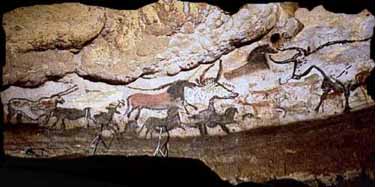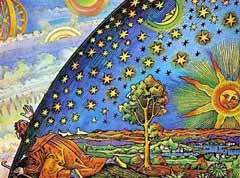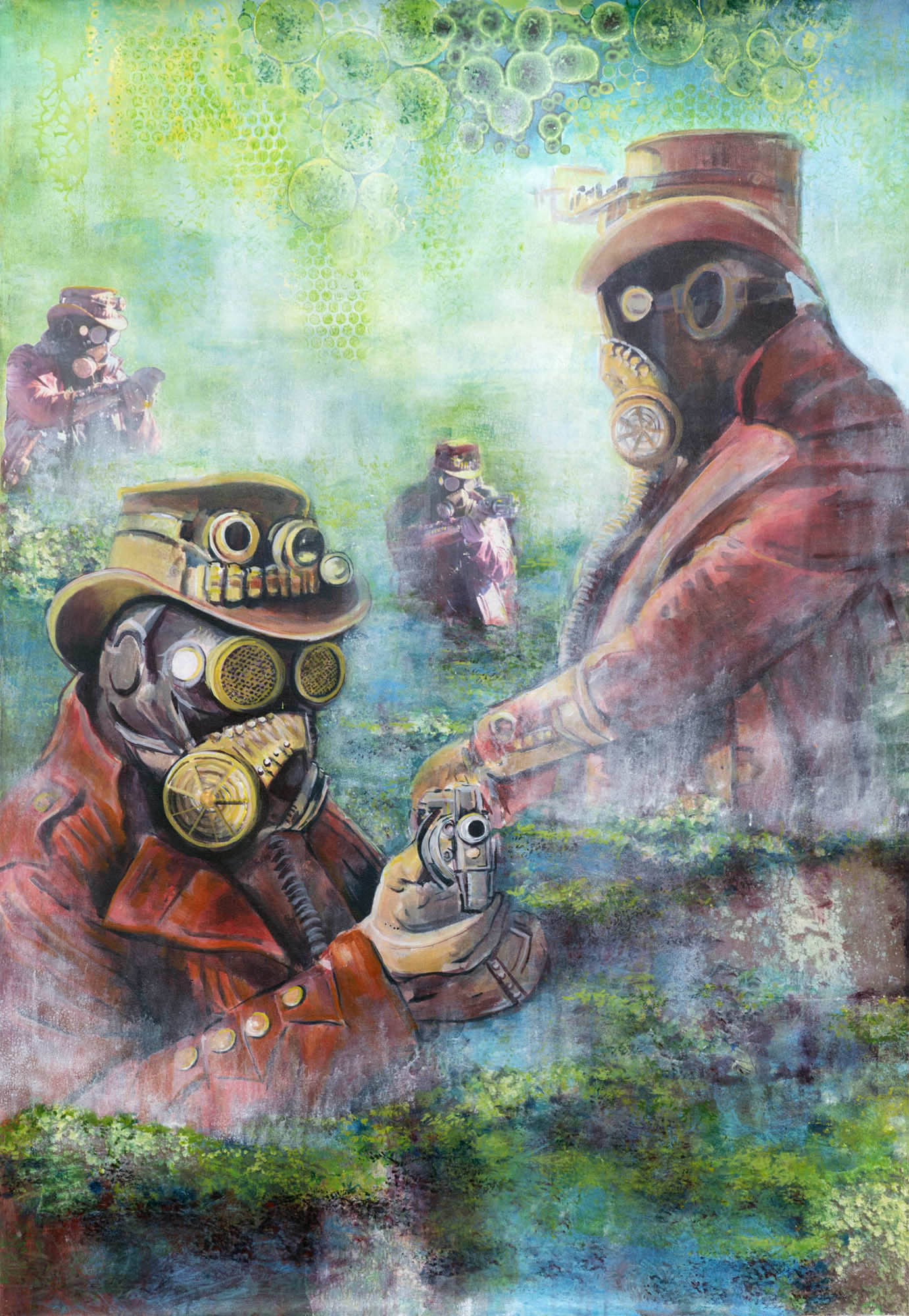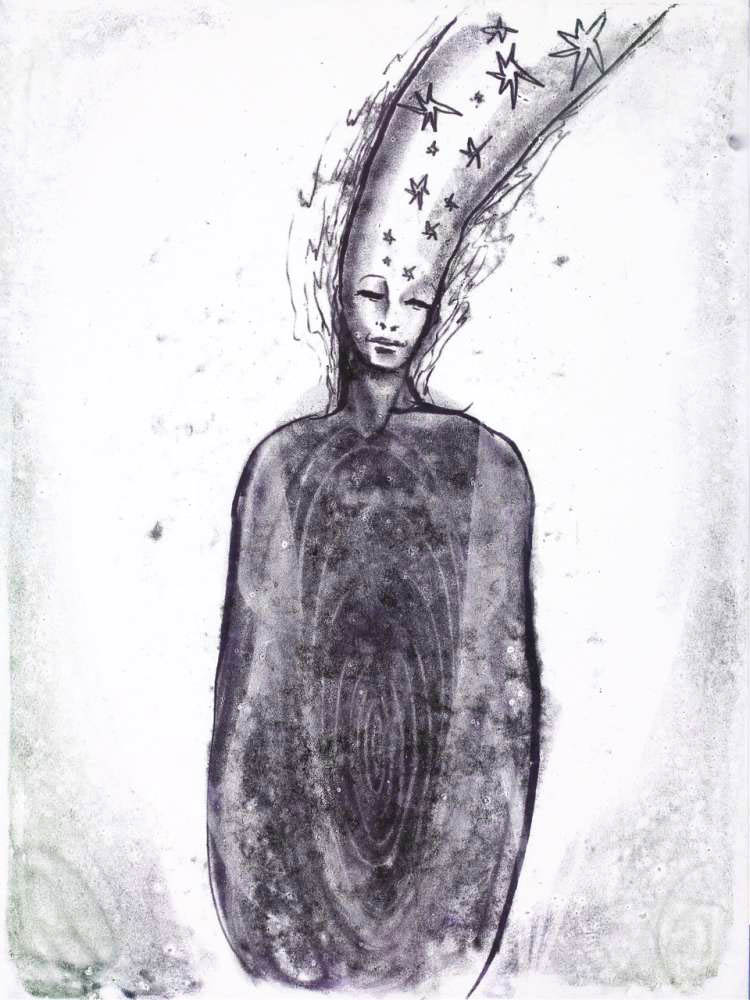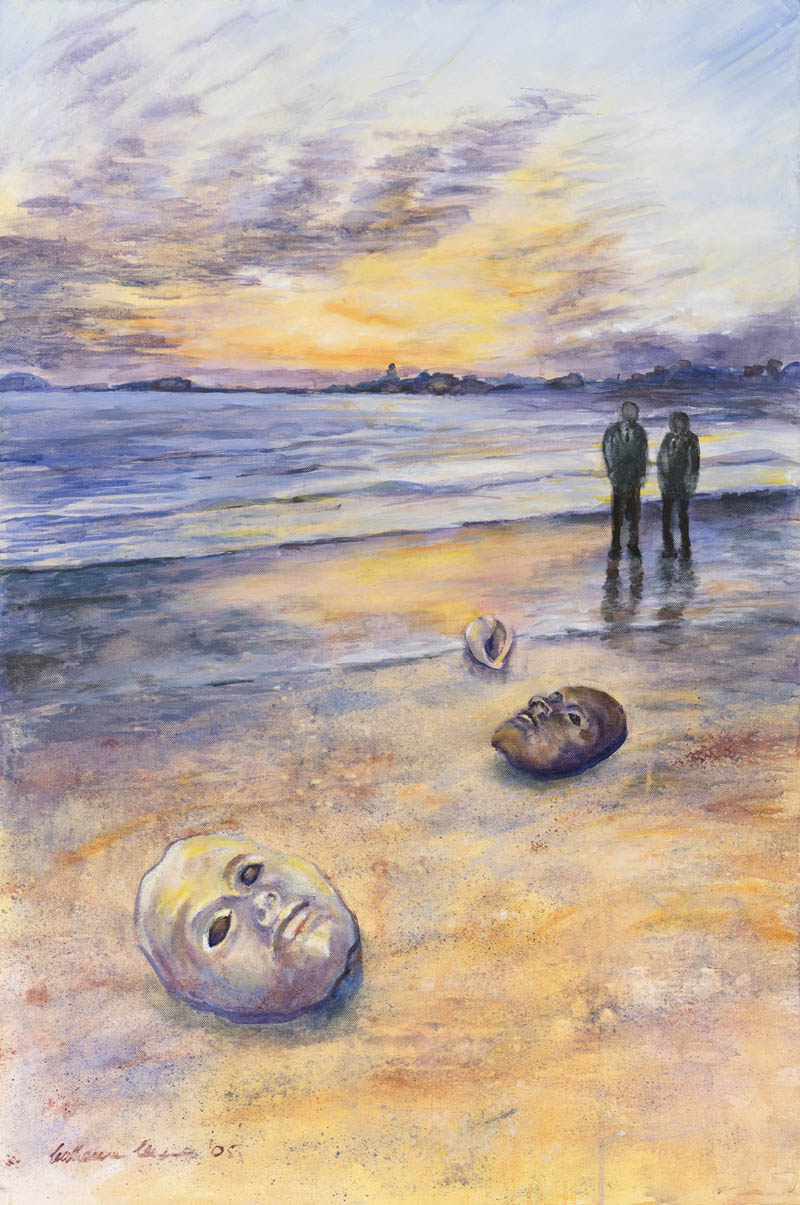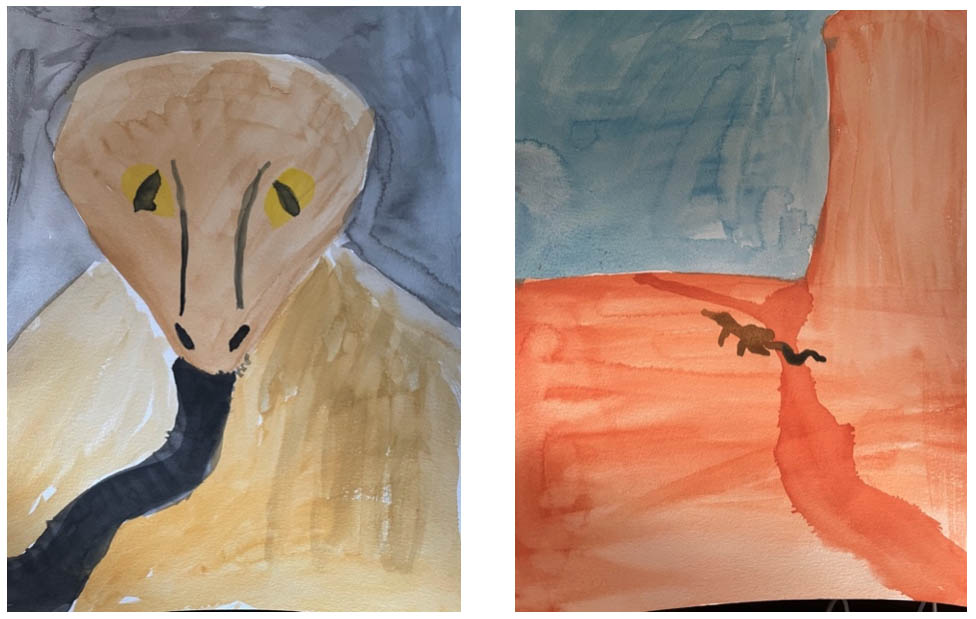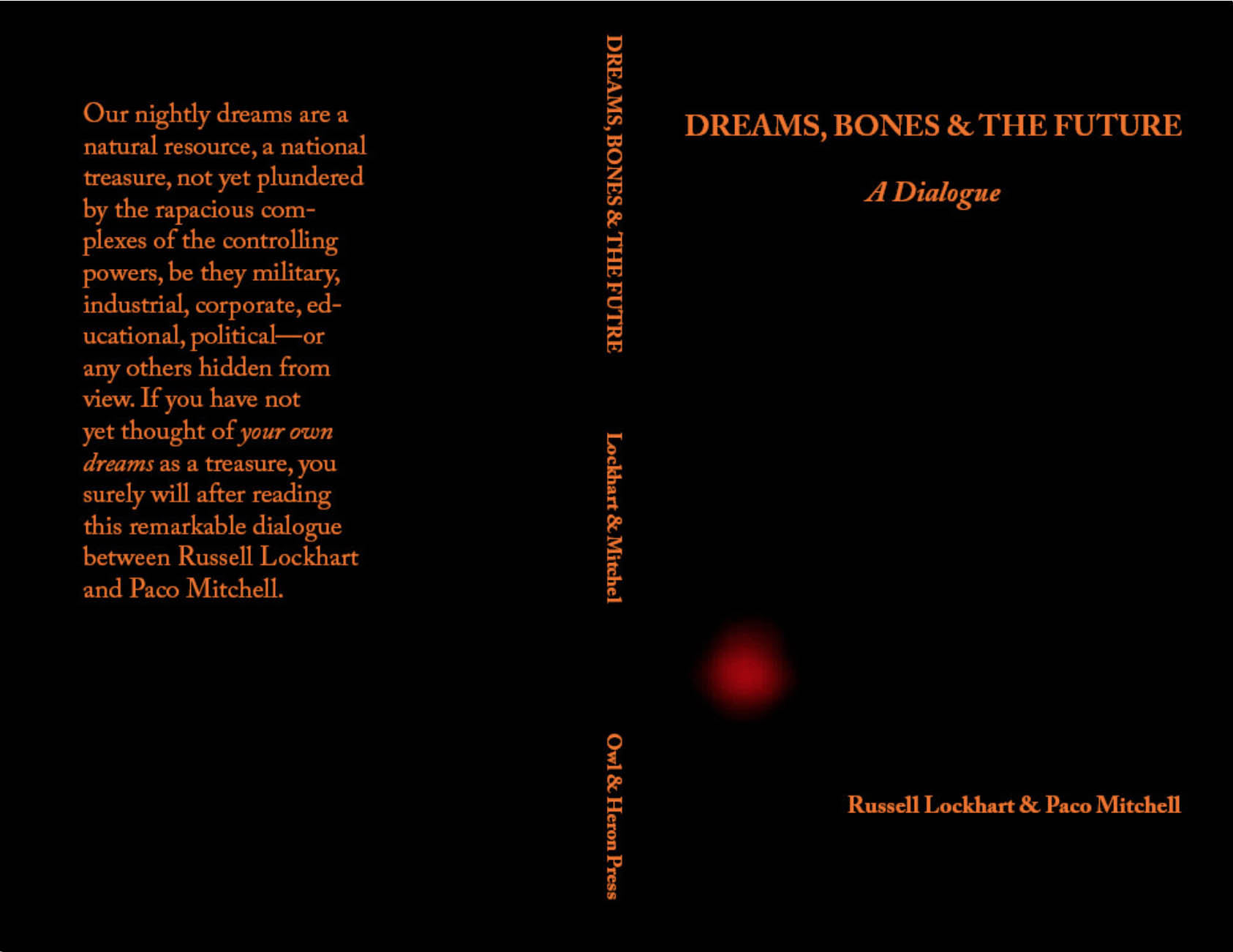
This is the eleventh in a series of excerpts from an ongoing dialogue between Russell Lockhart and Paco Mitchell.
Paco Mitchell: As usual, Russ, there is much to savor in the feast of your comments. How to choose?
Let’s say—I’ll close my eyes and select one example at random: i.e., your contrast between the extreme and global magnitude of our “commodity culture”, on one side, in which and to ever-increasing degrees a price is placed on practically everything—and Lewis Hyde’s “gift economy”, on the other—definitely a “minority report”.
The gift economy, as you point out, has long stood as the basis of a real community—com, “together” + munus, “gifting”—which may still exist today in isolated pockets and fragments, in the shadows of the dominant culture, so to speak. You and Hyde allude to the gift economy as a natural prerogative of artists, since their allegiance, in the best cases, is to something beyond themselves, which comes to them in the form of an autonomous “gift”, as opposed to a Puritanical piece of “property” or a “personal possession”.
Your observation regarding the extremities of excess the commodity culture is currently reaching—seeming like they must lead to an eventual fracture and breakdown, perhaps even a reversal—recalls your earlier references to the sand-pile experiment, which suggested that one more grain of sand is all that is required to precipitate a collapse of the entire pile. This of course is a modern day version of the old, proverbial straw that breaks the camel’s back—applicable to cultures, empires and civilizations, as well as to individuals.
However, if we ever see the point at which the commodity culture actually collapses under the weight of one more straw, or grain of sand, the upheavals that such a breakdown would precipitate, are almost beyond telling—grist for imaginative and dour fiction writers, perhaps. Definitely not utopians, like Tsek and his self-ordained cargo cult of 1944-45, which was supposed to result in imminent immortality—hence, Eliade’s interest in the eschatology of it.
The inherent tension between the commodity culture and gift-economy cultures, and especially the vast gulf that separates them, implies the possibility of an enantiodromia—“a running toward the opposite”—that we’ve spoken of before. This can be seen as a circular, cyclical or reciprocating image, like periods of financial inflation alternating with periods of deflation—the “irrational exuberance” of a bull market trend punctuated by sharp recessions or depressions, which, financial newsletter writers assure me, are indeed inevitable, just as the crest of one wave is inevitably followed by a depressive “trough”, before the next exuberant crest arrives. (The newsletter publishers and writers admit that they don’t know the timing, but they are quite willing to sell me “solutions” in their newsletters, solutions that are sure to protect me and my “assets”, guaranteed to help me “grow my wealth”.)
An enantiodromia, however, doesn’t have to have a reassuring, measurable, alternating wave-like structure, like light, or the strict pulses of alternating electrical current. It can also have a broken, irregular, linear structure, as when something proceeding in a fateful or fatal direction finally falls off the “cliff” it is inexorably headed toward.
This whole question reminds me of the legendary tale that Plutarch reported, of a voice from a nearby island calling out, by name, to Thamos, the Egyptian pilot of a passing cargo-and-passenger ship. The unknown voice admonished Thamos: “When you come opposite to [the island of] Palodes, announce that Great Pan is dead!”1 Since weather conditions permitted, when the ship passed by Palodes, Thamos carried out the demand, or plea, and shouted the news to the island’s inhabitants, that “Great Pan is dead”. Whereupon, as Plutarch said, “Even before he had finished, there was a great cry of lamentation, not of one person, but of many, mingled with exclamations of amazement”.
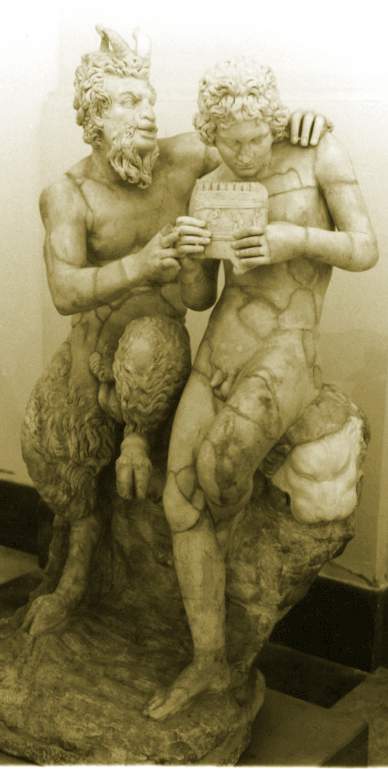
Palmer’s comment on this episode touches on the point I want to make here. In his introduction he wrote:
“It takes a long time to kill gods, both ancient and modern …but when the last worshipper passes on to the Isles of the Blest, a whole Weltanschauung passes along with him, a vision which speaks of Das Andere, of the Other, of the unique finality of Dinge an sich”.2
This may seem like it takes us far afield from our discussion, Russ, but to me it is quite pertinent. What you are calling the “commodity culture” could also be framed as one of the principle gods of our time, that is, the “God of Greed”, of endless accumulation, which may be the deep psychic force driving our compulsions to accumulate money, power, endless goods, etc. If it’s accurate to speak of the Spirit of our Times in this way, then the “death” of that “god” will indeed take a long time. Can you imagine what it will take to unwind the great, world-wide engine of consumption we have constructed? The last worshippers will undoubtedly have an unenviable task, having outlived their god, consigned to the miserable fate of picking through the rubble and ashes.
I like your notion that the gift economy could potentially be one of Eliade’s new types of religious experience. As you put it:
This led to my thinking about how the commodity culture is the prime mover of denial in relation to climate change. I was set to wondering how the gift culture would be what finally emerges as how humans will be able to function as the climate catastrophe and the sixth extinction begin to manifest in ever greater degree.3 I do not think that the commodity culture will do anything but make everything more miserable.
I agree. And yet, I am impressed with the validity of Palmer’s observation about how long it takes for gods to be killed—i.e., a long time. When I contemplate the looming climate catastrophe, and hear all the stern exhortations to muster sufficient “political will” to build the foundations for a “sustainable future”, I have often thought about the centuries it took before Christianity took root in the antique soil of Rome and Greece, when religious ideas were more welcome and familiar than they are now, cf. the practice of syncretism, for example. But even then, Christianity was forced on the Roman citizens by the warlord Constantine. And the Roman Empire, despite its fading glories, nevertheless only comprised a shrinking fraction of the globe. Gods and religions don’t die overnight, as Palmer said, and the present religion of the commodity culture is of greater and deeper extent than any other to date. Thus, the Christian impulse plays itself out in what must be an accelerating version of the so-called Anti-Christ—which is not any single person, but the entirety of our unconscious impulses in service of the Great God of Greed, among others.
I imagine that it will fall to a minority of courageous individuals to open themselves deeply enough to the wisdom of the gift-economy and its impulses toward generosity and community, as the waters and the flames continue to rise, and the last bastions of wealth and power fight off the inevitable.
No one needs to remind me how “negative” this view sounds. I am all too aware of it. But I didn’t go looking for it. It came to me, as I researched deeply into what have come to be the current trends.
If, in this volume, Russ, it falls to us to speak “unflinchingly” about what we see in terms of “Endings”, then difficult things must be said, even if for some reason they prove to be seen as premature. As anyone knows who has been following the climate science, all of the predictions about “how long it could take”, are repeatedly being revised downward—i.e., closer to the present than even the most knowledgeable of scientists originally thought possible. It’s all happening “faster than we thought”. Depending on where we look, scientific predictions of hundreds or thousands of years are now being recast in terms of decades. Sometimes less. Notice, I am not talking about computer modeling—I’m talking about actual measurements. Not what could happen theoretically, but rather what is happening.
Jung’s comments that you have cited, about “the last 50 years of civilization” and “the final catastrophe”, were made too close to his death to be published while he was alive. Maybe that’s just as well, since there surely would have been a bitter outcry over his “negativity”, and he had already faced more than enough vicious criticism in his lifetime.
By the way, I find it a bit ironic that you and I have not really lost our innate optimism and senses of humor, despite the dark depths we are attempting to plumb here, with our topic. I’m thinking of the idea of your “Final Ragnarök” dream as an example of the new type of religious experience Eliade was referring to. To think of the Final Ragnarök in that way, as a new type of global religious experience, one possible pattern among many, for the last grand round of rituals, the final Potlatch, and as an example of what the coming guest might realistically entail, all this actually makes me feel …well, optimistic, after a fashion!4
As for your comment about the lower-case designation of “the coming guest” and the upper-case designation of the great “Dream”, I’d never thought about those designations that way, as being intentional on Jung’s part. I had written them off to old age and his headlong impetus to spit out what he had to say to Sir Herbert Read, writing his lengthy letter in longhand. But what you say makes sense. And even if it was not intentional on Jung’s part, your point makes a lot of sense anyway, as it places the greater emphasis on the Dream as the primary vehicle for the multitudinous arrivals of the coming guest—washing ashore on the beaches of our sleep, our own unofficial “cargo cult” delivering up billions of dreams every morning, like notes in bottles, to be ritually circulated free of charge. As you said, quoting Jane Harrison: first the ritual, then the religion.
Russell Lockhart: A strong current running through your comments, Paco, pictures a future time when the commodity culture collapses, a time when “the upheavals that such a breakdown would precipitate are almost beyond telling—grist for imaginative and dour fiction writers, perhaps”. This reminded me of Jonas Mekas’ often quoted statement, that “civilizations perish because they listen to their politicians, and not their poets”. Mekas, perhaps the most ardent supporter of “non-commercial” cinema (and by extension all arts), was an experimental film maker as well as a poet.5 His observation highlights the fact that poets are imbued with imagination and politicians are imbued with power. So, I believe we are right to point to imagination as a key aspect of how to face what we all will face in the coming time.

I’m also reminded that Jared Diamond’s epigraph to begin his monumental work on the collapse of civilizations is the poem “Ozymandias”, by Percy Bysshe Shelly, a poem referring to Ramses II, and how rulers and their empires—no matter how powerful—are subject to decline, decay, ruin and oblivion,6 until all remnants of power wash away in the sands of time.
One reason why it is artists such as fiction writers and poets and filmmakers that are the ones who can and do tell the story of breakdown and collapse, is that they use imagination as a resource. I am reminded that the title of our series is Dreams, Bones, & the Future. This title points to the centrality of dreams and mantic processes (e.g., the “bones” of the I Ching) and their imaginal underpinnings in relation to the future.
But what is the nature of this relation? Are we predicting? Are we prophesying? Are we Seers? Clairvoyants? Guessers? Verbal tricksters?
In times past, the primary function of a prophet was not to foretell the future. The prophetic voice was used to “call back” wayward believers to the fold. In a way, we are using our voice to “call out” to our readers, calling them to pay attention to dreams and other such “irrational” processes as resources for developing ways of being with and immersed in the calamities now unfolding. We are not in the business of predicting the timing and nature of climate change and other such looming disasters. Those details are for science to reveal—as is being done.7 Nor are we seers or clairvoyants or mystics “seeing” the future, though we pay close attention to intuitions and other manifestations of the deep psyche.
And we do listen to dreams and we do assert the value of dreams, visions, synchronicities and myriad mantic processes, joined with imagination and creative responses as having the potential of creating ways into the future, whatever the future may hold. As best we can tell, what the future holds is collapse and the potential for human extinction. If so, some say, as depression and despair take hold, why not just kill ourselves and be done with it. As we have already said, humans are on a collective suicidal trajectory already. For whatever reason, you and I have not fallen into despair and gloom. This is partly due to our intense curiosity about what the deeper psyche is bringing to the fore rather than focusing on typical collective responses. We do see that any form of “business as usual” will not serve us, nor will hope-fed fantasies of human exceptionalism. At the very least, what we are challenging directly is what you call “The God of Greed”, essentially Money-as-God. This is the dominant religion of our time and, as you say, citing Palmer’s argument, that the death of this god will take a long time. And we know without doubt from our knowledge of history just how dangerous it can be to challenge the dominant religion. Heresy is never welcomed as a way that leads to change and transformation, even though it is demonstrably fruitful!
Will the necessary enantiodromia take a long time? Maybe yes. Maybe no.
To make sense of what I’m feeling I will need to unpack this. First, enantiodromia is almost always pictured in terms of something turning—eventually—into its opposite. This binary form of the concept has always struck me as inadequate. Recall our earlier discussion about the idea of opposites and the idea of differences. There I proposed that we would get closer to the complexity of the issues we are talking about if we worked on differences. I feel the same about enantiodromia which includes the idea of the death of the dominant god (whatever the god of the time might be). So, yes, the death of Money-as-God could take centuries before it turns into its opposite (some sort of gift or relational economy).
But we do not have centuries.
What we have is an inordinate pressure building that humans never have experienced. The prior history of the collapse of societies as well as religions may no longer be applicable in critical ways, may no longer serve as a relevant “guide” for what is coming. Yes, the collapse of the Roman Empire and the rise of Christianity took centuries! You are right about that. This pressure I am imagining is what is beginning to appear in people’s dreams, in writer’s imaginations, in the unforeseen events that shock and surprise us, and even more so, in those events and situations that are seen clearly but are denied, ignored, or untended by the powers that be in service to power.
But there is “something else”.
Something alien, something beyond the ken of human experience.
Readers should know that we are writing in the midst the Corona Virus pandemic of 2020, and the unprecedented rapid and major declines in the equity markets throughout the world. Economies are deteriorating as the virus makes its way around the globe, causing governments to take extreme actions to shut the virus down before potential depression takes root. The “upheavals” you referred to that are “almost” beyond telling, are now in progress. The clamor to “return to normal” is deafening. It does not appear that even this monumental crisis is enough of a “wake up call” to fully embrace the new reality. And it cannot be forgotten that while climate change has taken a back seat to the current situation, this double crisis is riding atop that even deeper and more threatening crisis that we have already indicated points to complete collapse, even human extinction. That is something homo-sapiens have never experienced.
We have alerted our readers to the “centrality” of dreams in dealing with “what is coming”. So, amid this unfolding, what are we dreaming, Paco? You have already told of your “alien” presence dream. Let me illustrate with a couple of dreams I have had in this context. In one dream, I was wondering how to write about the synchrony between the world-wide COVID-19 pandemic and the global melt down in the financial markets. A voice broke into my deliberations. It was a stern, stentorian voice announcing, “It’s all prelude!” I woke up startled by the voice—the sort of voice speaking with undoubted authority—and even more so by the message.
What has happened qualifies as a collapse from recent all-time market highs in February 2020, and economies grinding to a halt from rosy pictures a few short weeks ago. Politicians and Central Banks the world over are acting in unprecedented ways to deliver drastic fiscal and monetary actions8 and politicians are calling for a rapid “return to normal”. This is a typical response. Those in charge do not realize that it was the “normal” that was the problem, insuring inequality, denial, and rampant greed in relation to climate change and other potential cataclysms. Those in charge do not see that what has happened calls for fundamental changes in the financial system itself as well as an end to the governmental collusion in policies that are detrimental to the welfare of all and the environment and other living creatures.
My dream, then, alludes not to a quick recovery back to normal, but that the present multiple crises are a prelude to what is coming. The dream does not say what the current situation is a prelude to. But the dream has a deep sense of expectancy about the future that hints at something darker. That was the emotional impact of the message on me. So, given the dream image, I look to the future not with the expectation of a return to normal, but with eyes wide open looking for signs of “something else”.
When dreams announce, it is useful to look at subsequent dreams to draw forth the character of what is being referred to. A follow up dream arrived shortly after the prelude dream. In this dream, I was alone on an expansive sandy beach looking off to the horizon. In the distance I saw a very large wave like one might see in some locations where waves reach extreme heights. Then, as I looked, I saw a second wave rise, behind the first, this time narrower and reaching an impossible height for any natural wave. Tall and thin as if some force was drawing it “up” into the sky from the ocean. Then as I watched I saw a third wave, behind the first two, now much thinner than the second but reaching “far into the heavens”. These waves were approaching. The image was stunning, and I woke up not fearful, but with a sense of “knowing”, knowing that something totally outside normal reality was on the move and coming forth, exhibiting in successive waves, forces beyond comprehension.

The high but natural wave would come first. I sensed this might be the dream’s image of the present pandemic and financial crisis, both huge, yet quite within the realm of comprehension. We can see, or we have seen or at least known about similar or worse things in the past (The Spanish Flu of 1918, the 1929 financial collapse leading to the Great Depression). The second wave is like a tornadic waterspout. This can be extremely dangerous. It is a narrow tubular vortex rising from the water’s surface into a cloudy sky and sucking the water into the cloud as the tubular tower moves in cyclonic fashion. Perhaps this is the dream’s image of some potential danger, but from something known, perhaps an image of something climatic. In the dream, the image was of this type but far more towering than what is typical of waterspouts which are formed between the water’s surface and low-lying clouds. The dream waterspout rose much higher, hinting at something exceeding all known extremity of this phenomenon. But the third image, though narrower, rose far into the heavens, as if when it came ashore it might wrap itself completely around the world, perhaps many times. It was as if there was no end to its height. In dreams where something “impossible” happens, it is most often a signature that what will happen will be totally unexpected, out of the blue, totally unforeseen. Coupled with the prelude dream, it becomes impossible for me to embrace the “return to normal”, as a way into the future.
I felt with the third wave, the dream was entering into a mythic dimension, as there was nothing in nature that corresponded to this third wave.
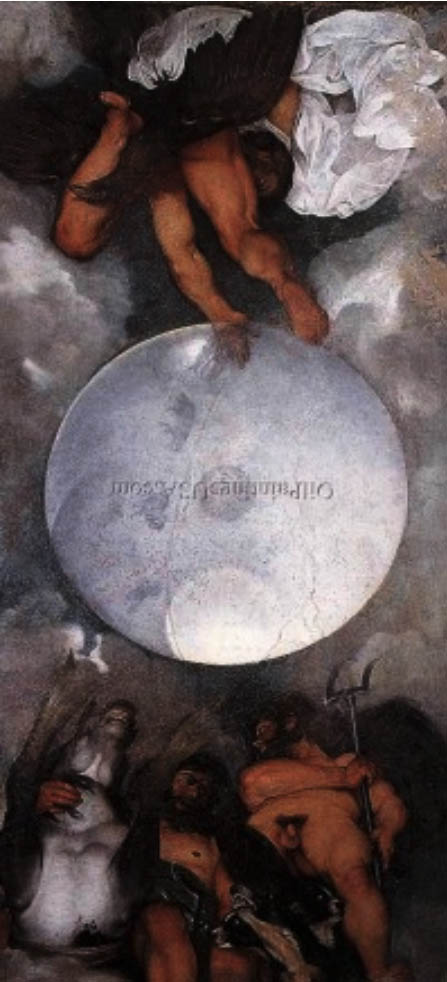
Looking at the dream mythically, we see some enormous energy drawing up from the sea to the sky and beyond. Poseidon (Neptune) rules the waters and Zeus (Jupiter) rules the heavens. Poseidon is older brother to Zeus. There was no sense of opposition between the water and the sky, but some sort of conjoining, a conjunction of the powers of these mythical gods. As I reflected on this, I was reminded of Caravaggio’s famous oil painting on the ceiling of the Villa Aurora in Rome (1597). It pictures Jupiter, Neptune and Pluto, along with their animal spirits (Jupiter’s eagle, Neptune’s sea-horse monster, and Pluto’s three-headed dog, Cerberus). The painting is an allegory of alchemical processes described by Paracelsus, to which Caravaggio’s patron was particularly taken. In this sense, Jupiter is sulfur, Neptune is mercury, and Pluto is salt. These are alchemical processes on a near cosmic level.
But there were/are three brothers. The missing brother in the image is Hades (Pluto). I began to feel a certain ominous quality in these stupendous waves; no doubt it was the unseen Hades drawing forth such a feeling. One might say the three brothers are working together in producing a hitherto unknown phenomenon.
These bare notes on these dreams only scratch the surface of what I was led into under their direction. As I wrestled with these images, what I became certain of was that all the “visible” realities that we are aware of and that we have written of, do not touch the unknown nature of what is coming. As we can see, all the proffered “solutions” to the current crisis, the underlying climate crisis, even the threat of extinction, are not “touching” what is coming.
The arrogance of the rational that says we can understand anything; the hubris of those in power that we can overcome anything and return to the ways that brought us to the brink; the unbounded hope that paralyzes the multitudes to inaction; these are the foregrounded aspects of what we see as we write. But what if we can’t understand? What if we can’t return? What if we become aware of the futility of hope? After all, hope was the last remaining evil in Pandora’s box.
I am reminded of Stanislaw Lem’s novel, Solaris. The central idea of this is the utter alienness of the red planet. As Lem said, “it cannot be reduced to human concepts, ideas, or images”. _Solaris_ is unique in this respect and I believe is one artist’s effort anticipating[ to anticipates], in some sense or other, what is coming. The potential for human extinction may fall into the category of unacceptably alien. The hint from Solaris is that humans may be incapable of understanding their own extinction. Even those scientists given to the direst of warnings, for the most part, mitigate their warnings with various intensities of hope, in the form of redemption, regeneration, and rebirth. The gravitational pull of this can be seen even in something as nonsensical as President Trump wanting to reopen the economy and get back to work, back to normal, on Easter, the day of the risen Christ. It is as if any possibility of “something else” cannot be.

But the dream that that presented itself to me, the one that continues to haunt me in the deepest sense, speaks of celebrating the final Ragnarök. This surely is more in line with Solaris and the growing red spot on our volumes of Dreams, Bones & the Future.
The dream source gets it.
References
1 This story was reported in the Introduction by Robert B. Palmer to Walter F. Otto’s volume, Dionysus: Myth and Cult. Spring Publications, 1981, pp. ix-x. Palmer was quoting Plutarch, who was relating the tale, which supposedly dated from the first century A.D., under the Roman reign of Tiberius.
2 Ibid, p. x.
3 Emphasis added.
4 A dream I had several years ago has a bearing on this image. Perhaps there will be another opportunity to look at the dream against the background of this context.
5 End note on Mekas
6 End notes on Diamond. It is useful to reflect on why it is then that Diamond spends the next 575 pages telling the story of collapse.
7 The strong sense of prediction requires a scientific approach involving precise conjecture and equally precise means of recognizing refutation.
8 Note on the difference between fiscal and monetary actions.




